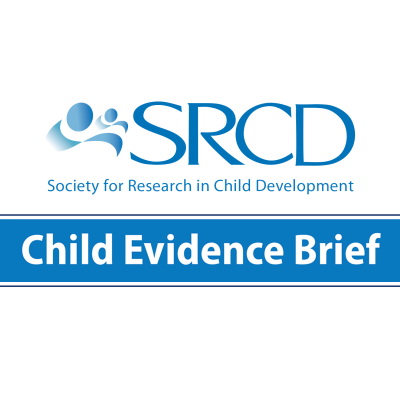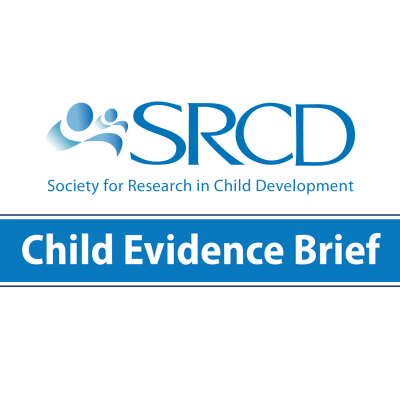Children and Disaster
Child Development Research in Brief, 2010
Disasters affect the lives of millions of children every year. In addition to natural disasters, such as earthquakes, hurricanes, and floods, children are also affected by armed conflict, genocide, industrial accidents, and terrorism.
New research on children in disaster can help us plan more effectively for responding to their needs. Understanding children’s responses to different disaster situations across age and post-disaster circumstances can help us learn which children are most at risk and what supports are most important to consider in recovery.
What Does the Research Tell Us?
A special section featured in the July 2010 edition of the journal Child Development includes 16 papers on Children and Disaster. The papers focus on a range of different disaster contexts and groups of children. Together, they illustrate that children’s responses to disaster vary by dose and nature of exposure, child and family characteristics, and the recovery context.
Disaster Type, Intensity and Duration
More difficult recoveries for children were observed when disasters were more severe or prolonged, involved direct exposure or participation of children in extreme violence, and when additional adversities continued to occur. Children exposed to multiple disasters experience particularly high rates of both depression and posttraumatic stress symptoms.
For example, one study of Sri Lankan children exposed to both an ongoing civil war and the 2004 tsunami found that 40 percent of children experienced PTSD.4 Even higher rates of PTSD have been found among children who were forced to participate directly in acts of violence as child soldiers.10
Caregiver Role and Past Experiences
Separation from caregivers and also the well being of primary caregivers during a disaster event can affect children’s responses and recovery.
One study found that rates of clinically significant behavior problems among preschool children directly exposed to 9/11 in Lower Manhattan varied according to whether their mothers had symptoms of PTSD and depression. The researchers noted that mothers may be less responsive to their children when they themselves are suffering from PTSD and depression.5
Other studies found that children who experienced disaster and its aftermath in the context of ongoing war, poverty, or family violence showed a decreased ability to adapt and recover from disaster, underscoring the importance of the recovery context for resilience following disaster. 4 11
Child Characteristics
Children’s responses to disaster vary by gender, age and individual differences in coping skills.
A study on school-age children affected by Hurricane Katrina found that girls are more likely to report negative emotional responses, such as feelings of depression, and are also more likely to seek support, such as consulting a therapist. Boys may under-report symptoms they may actually be experiencing, which may place them at risk for not receiving needed supports.11
Girls and boys also may have different experiences of disaster. In one study of child soldiers, girls were more likely to experience sexual assault and communities responded differently to returning male and female child soldiers.3
In addition, children of different ages may have different resources and vulnerabilities. For example, older children may have greater direct exposure to certain traumatic experiences in disasters and are better able to grasp the implications of a disaster. At the same time, older children can draw on more effective coping strategies and a broader set of social supports during recovery.3 11
Community Resources and Responses
The communities to which children return and the community services that families with children rely on play important roles in fostering children’s recovery.
Resuming usual routines of school and play activities was associated with more positive adjustment among the children exposed to traumatic war experiences in Sierra Leone as well as for children who experienced Hurricane Katrina.3 11 Yet some communities may face ongoing disorganization that poses challenges to children resuming normal routines. This may be the case, for example, when families and communities show high rates of violence in the aftermath of armed conflict.3 10
Implications for Policy and Practice
- Prepare for evacuations and relocations that include keeping children together with their caregivers. Reunite children and caregivers if they have to be temporarily separated. Provide nurturing caregivers for children who have lost their permanent caregivers.
- Train first responders to take action in ways that are appropriate for children of different ages.
- Remember that first responders for children include parents, teachers, and child care providers in addition to emergency responders.
- Provide children affected by disaster with routines, activities and contexts that help them adjust and return to “normal” life. Opportunities for play and learning are important to this process, including the restoration of functional schools and other community organizations that serve children and their families.
- Support community resilience and the cultural, spiritual and community practices that serve families and their children.
- Help children to develop and restore meaningful relationships, and promote opportunities for them to be effective in play, school, work or recovery activities. Such opportunities may nurture hope, meaning, and a sense of agency in both the adults who care for children and the children themselves.
- Include scientists with developmental knowledge in decision-making related to disaster recovery and rebuilding efforts to facilitate better disaster planning and response.
References
The following articles appear in the special section of Child Development on Disasters and their Impact on Child Development, edited by Ann S. Masten and Joy D. Osofsky, published in the 2010 July/August issue of Child Development (Volume 81, Number 4). The articles are listed alphabetically by name of first author.
1 Ager, A., Stark, L., Akesson, B. & Boothby, N. Defining best practice in care and protection of children in crisisaffected settings: A Delphi study, 1271-1286
2 Becker-Blease, K. A., Turner, H. A. & Finkelhor, D. Disasters, victimization and children’s mental health, 1040- 1052
3 Betancourt, T. S., Borisova, I. I., Williams, T. P., Brennan, R. T., Whitfield, T. H., de la Soudiere, M., et al. Sierra Leone’s former child soldiers: A follow-up study of psychosocial adjustment and community reintegration, 1077-1095
4 Catani, C., Gewirtz, A. H., Wieling, E., Schauer, E., Elbert, T., & Neuner, F. Tsunami, war, and cumulative risk in the lives of Sri Lankan school children, 1176-1191
5 Chemtob, C. M., Nomura, Y., Rajendran, K., Yehuda, R., Schwartz, D., & Abramovitz, R. Impact of maternal posttraumatic stress disorder and depression following exposure to the September 11 attacks on preschool children’s behavior, 1129-1141
6 Fernando, G. A., Miller, K. E., & Berger, D.E. Growing pains: The impact of disaster-related and daily stressors on the psychological and psychosocial functioning of youth in Sri Lanka, 1192-1210
7 Gershoff, E., Aber, J. L., Ware, A., & Kotler, J. Exposure to 9/11 among youth and their mothers in New York City: Enduring associations with mental health and sociopolitical attitudes, 1142-1160
8 Kilmer, R. & Gil-Rivas, V. Exploring posttraumatic growth in children impacted by Hurricane Katrina: Correlates of the phenomenon and developmental considerations, 1211-1227
9 Kithakye, M., Morris, A. S., Terranova, A. M., & Myers, S. S. The Kenyan political conflict and children’s adjustment, 1114-1128
10 Klasen, F., Oettingen, G., Daniels, J., Post, M., Hoyer, C., & Adam, H. Posttraumatic resilience in former Ugandan child soldiers, 1096-1113
11 Kronenberg, M. E., Hansel, T. C., Brennan, A. M., Lawrason, B., Osofsky, H. J., & Osofsky, J. D. Children of Katrina: Lessons learned about post-disaster symptoms and recovery patterns, 1241-1259
12 Layne, C. M., Olsen, J. A., Baker, A., Legerski, J.-P., Isakson, B., Pašalić, A., et al. Unpacking trauma exposure risk factors and differential pathways of influence: Predicting post-war mental distress in Bosnian adolescents, 1053-1076
13 Masten, A.S., & Osofsky, J.D. Disasters and their impact on child development: Introduction to the Special Section, 1029-1039
14 Oncu, E. C. & Wise, A. M. The effects of the 1999 Turkish earthquake on young children: Analyzing traumatized children’s completion of short stories, 1161–1175
15 Peek, L. & Stough, L. M. Children with disabilities in the context of disaster: A social vulnerability perspective, 1260–1270
16 Vigil, J. M., Geary, D. C., Granger, D. A. & Flinn, M. V. Sex differences in salivary cortisol, alpha-amylase, and psychological functioning following Hurricane Katrina, 1228–1240
Illustrative examples of the research are noted in this brief.


